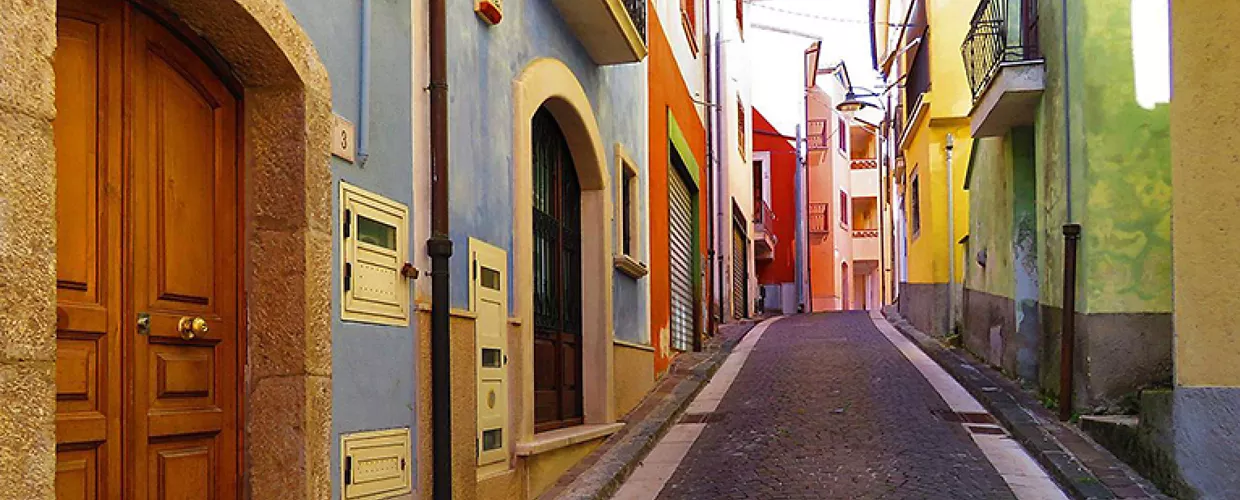This content was automatically translated. View the original text.

Overview
The village of Pertosa
Colourful houses, white artichokes and magnificent caves
The centre of Pertosa, surrounded by the green Alburni Mountains and immersed in endless hills covered with centuries-old olive trees, is located on the right side of the Tanagro river. The name of the town derives from the Latin pertusium, meaning “narrow opening”, and refers to the narrow entrance of the Grotte dell'Angelo (Angel's Caves), located nearby. Its historical centre is a small maze of narrow streets and passageways, all enlightened by the bright colours of the buildings, in harmony with the bright green of the surrounding vegetation. A little gem indeed!
Why it is special
The flourishing nature of Pertosa is nourished by the presence of water, which is extremely precious for this area and has also stimulated the development of numerous productive activities. The land is in fact crossed by the Tanagro river and benefits from an extremely varied flora and fauna. The natural environment is the setting for many charming locations, such as the Maremanico Waterfall and the Campostrino Gorges. Several trekking itineraries are possible in the area, including the “Cammino dell'Alleanza”, from Pertosa to Petina via Auletta, and the Alta Via of Mount Cervati.
Not to be missed
In the depths of the Monti Alburni: it is here that the Grotte dell'Angelo (Angel's Caves) run for about 2,500 metres, and we can’t leave Pertosa without visiting them. The Negro River guides us into the caves. We follow it for about 200 metres and a breathtaking spectacle opens up before our astonished eyes: immense caves, tunnels, gigantic stalagmites and stalactites, through which the river flows undisturbed.
A bit of history
The Pertosa-Auletta Caves, also known as the Angel's Caves, gave their name to the town of Pertosa, but also, in a certain sense, constituted its foundation. The first human settlements in the area (dating back to the 2nd millennium B.C.) were located in the underground cavities, and then gradually emerged in the surrounding area. The land, however, was insalubrious, and it had to wait until the arrival of the Benedictine monks in the 11th century for a reclamation and the beginning of olive tree cultivation. Pertosa remained a scarcely populated centre for a long time, and stayed under the dominion of Caggiano, from which it finally became emancipated in 1829.
Good to now
Back to the surface, let's discover Pertosa's food tradition. Pertosa is particularly well-known for the white artichoke, a variety that grows in this very small area that also includes Caggiano and Auletta. In the 1980s, the white artichoke was at risk of extinction, but its cultivation has recently resumed and about 15 hectares are currently cultivated. The larger artichoke heads are eaten fresh or cooked in various ways, while the smaller ones are preserved in olive oil or turned into delicious pâtés.
Credit to: Gianfranco Vitolo
84030 Pertosa SA, Italia